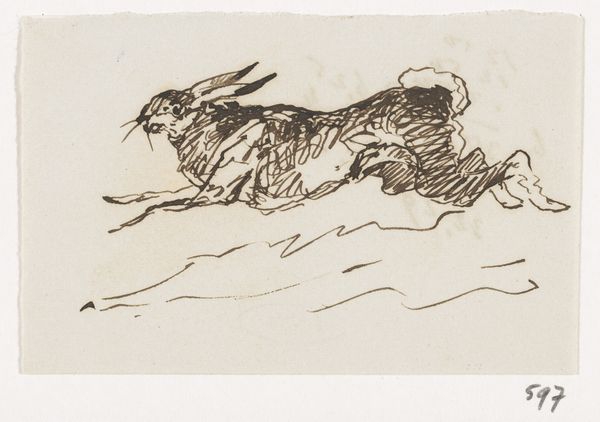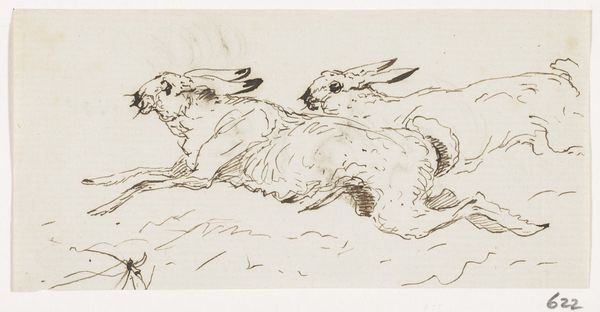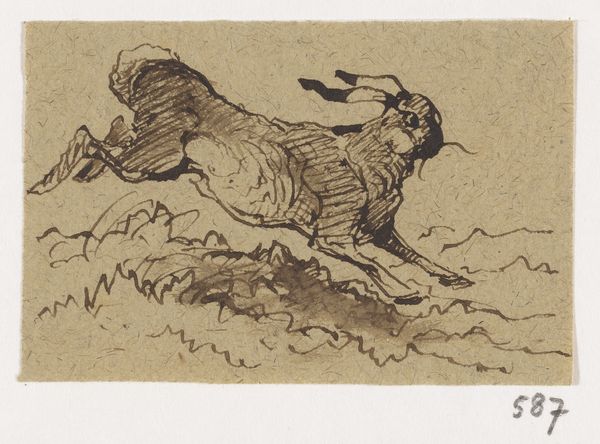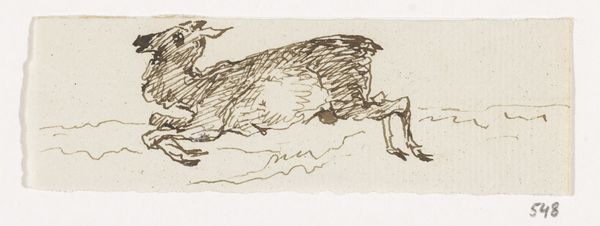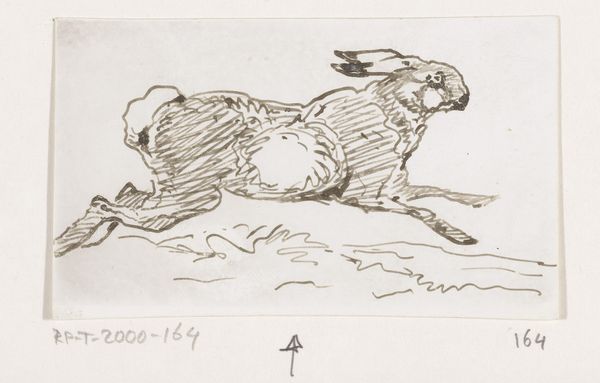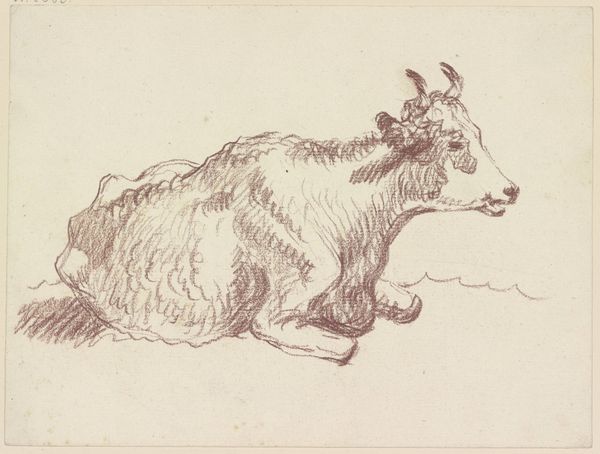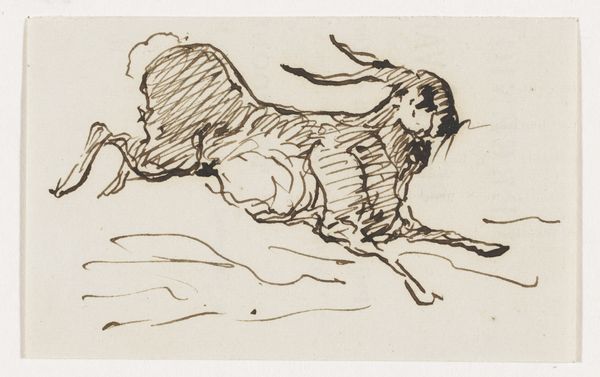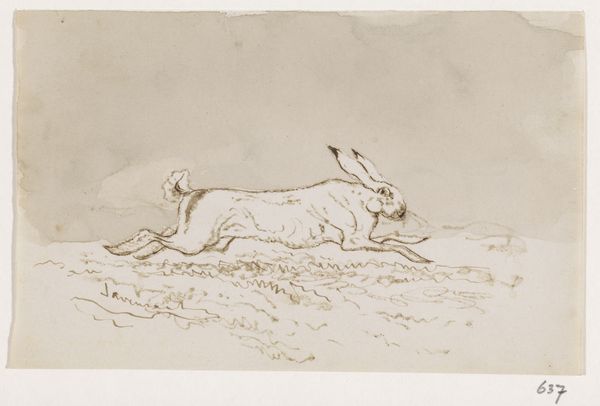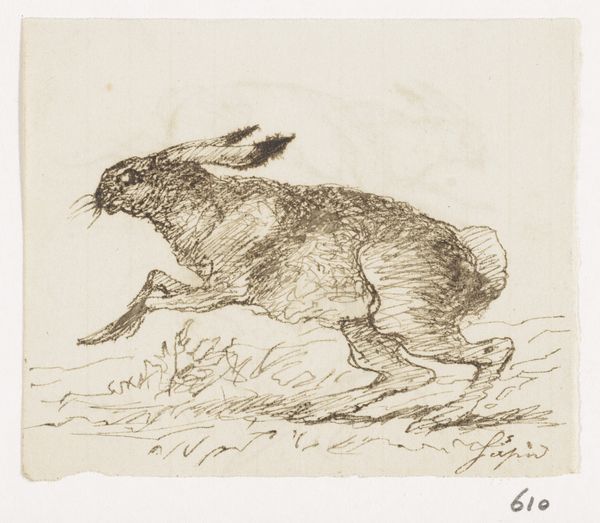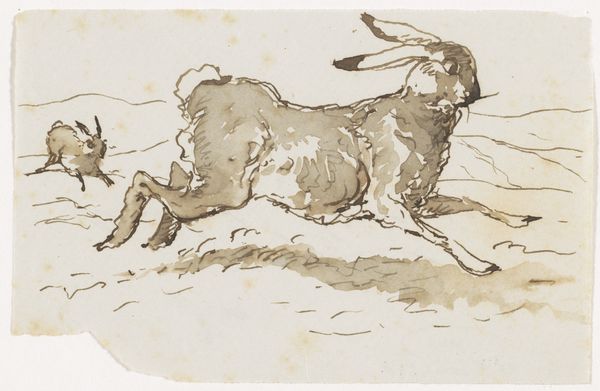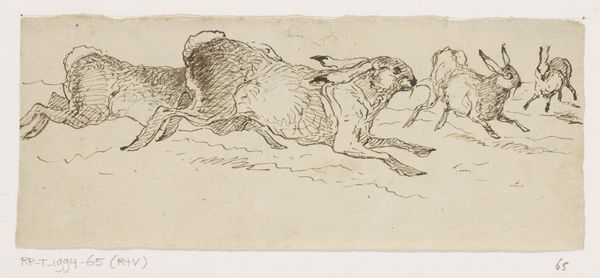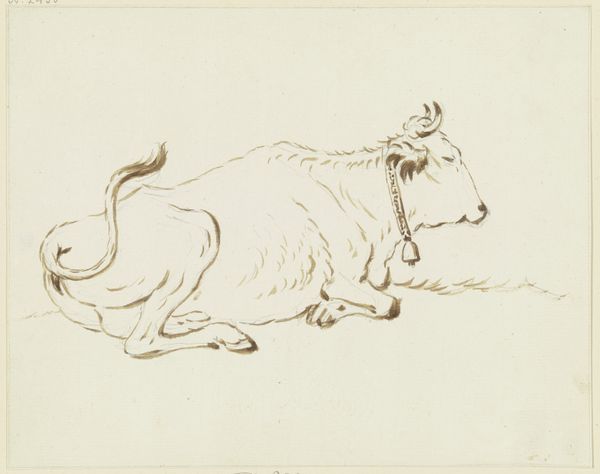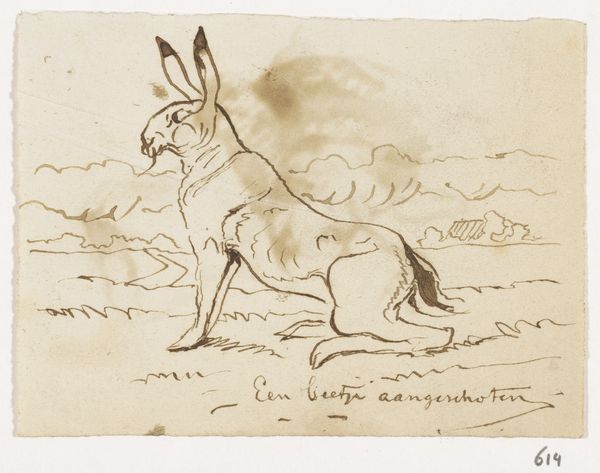
drawing, paper, ink
#
drawing
#
landscape
#
figuration
#
paper
#
ink
#
line
#
realism
Dimensions: height 75 mm, width 108 mm
Copyright: Rijks Museum: Open Domain
Editor: This is Johannes Tavenraat's "Haas," created between 1840 and 1880, using ink on paper. It’s a quick sketch of a hare, seemingly mid-leap. What I find most striking is the artist's economy of line; so much movement conveyed with what feels like so little. What do you see in this piece? Curator: Formally, the work succeeds through its manipulation of line, establishing depth, texture and movement. The lines around the hare's body create a sense of volume and weight, whereas the thinner lines underneath suggest a ground plane and the hare’s forward motion. Note the cross-hatching used to denote shadow and mass on the creature’s back versus the bare use of outline elsewhere; the stark contrast really animates the form. What does this contrast suggest to you? Editor: It makes the hare seem really dynamic. It’s like a spotlight is only hitting one part of it. Almost abstracted. So, the formal aspects create the overall feeling? Curator: Precisely. The composition is a closed one; attention stays wholly within the frame through the dynamism and stark texture of our focal object. The Realist element of capturing the animal "in-flight" would've appealed to an art market more interested in depictions of observed experience rather than idealised imagery. Editor: So, breaking down how the artist used line and contrast helps us understand not just the technique, but the artistic intention behind it. Curator: Indeed. It showcases an interesting example of artistic and market convergence. What was intended can never be known, but can be argued through a consideration of visual factors! Editor: That's a very helpful method. Thank you. Curator: My pleasure. This type of analysis allows the viewer a perspective outside the content matter.
Comments
No comments
Be the first to comment and join the conversation on the ultimate creative platform.
